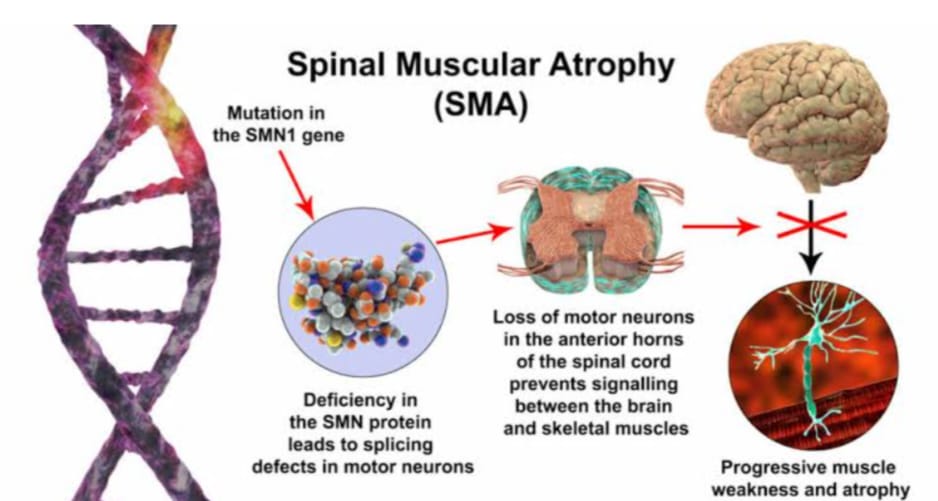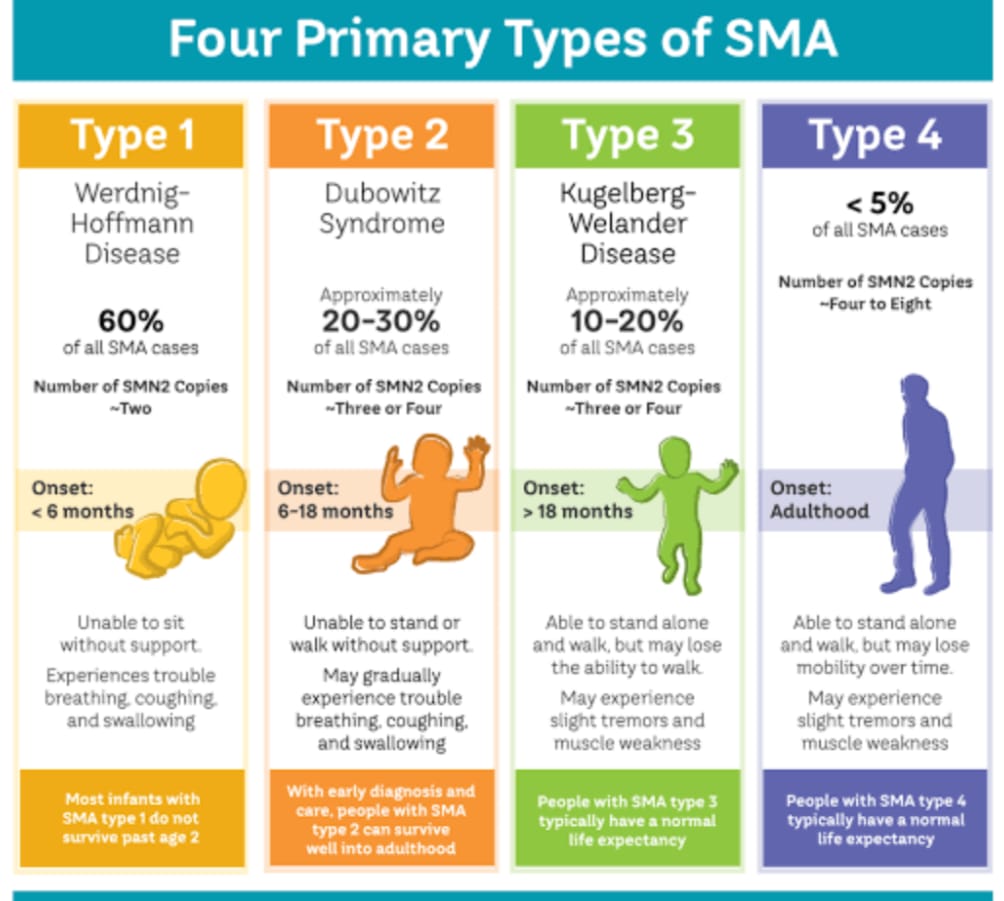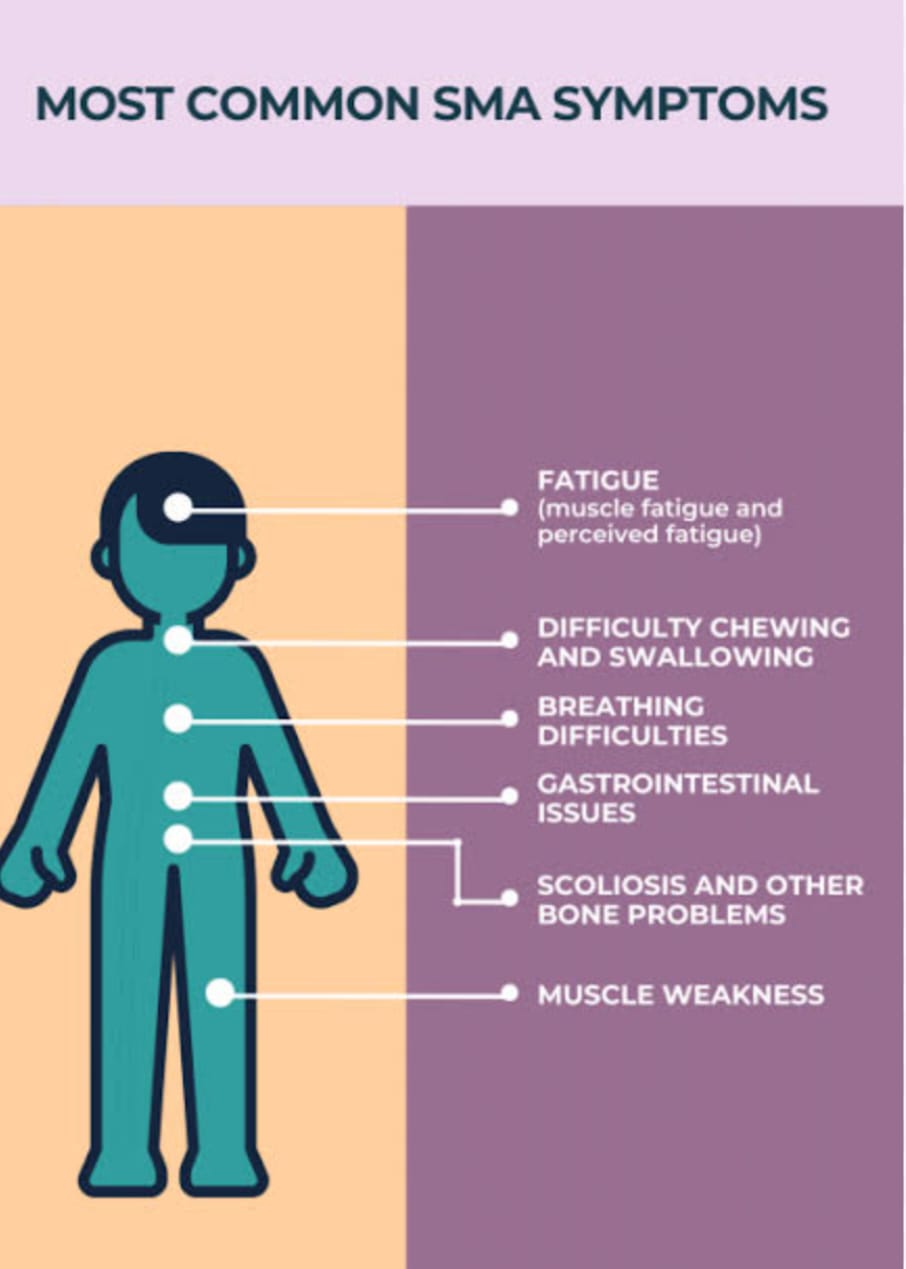Spinal Muscular Atrophy
Spinal muscular atrophy (SMA) is a disease characterized by progressive degeneration of motor neurons in the spinal cord. The disorder causes weakness and wasting of the voluntary muscles. This weakness is often more severe in the legs than in the arms. Spinal muscular atrophy (SMA) affects the nerves in an area of the spinal cord called the anterior horn. These nerve cells become damaged, breaking the link between the brain and the muscles. As a result, the muscles can`t be used and become wasted or atrophied. There are many types of SMA, and some of them are fatal. Life expectancy depends on the type you have and how it affects your breathing. There is no cure. The incidence of spinal muscular atrophy is about 1 in 10,000 live births with a carrier frequency of 1 in 50.
Gender:-
Male individuals are most frequently affected, especially with the early-onset forms of spinal muscular atrophy.
Age:-
The ISMAC classification system is based on the age of onset. According to the ISMAC system, the age of onset for spinal muscular atrophies is as follows:
SMA type I (acute infantile or Werdnig Hoffman): Onset is from birth to 6 months.
SMA type II (chronic infantile): Onset is between 6 and 18 months.
SMA type III (chronic juvenile): Onset is after 18 months.
SMA type IV (adult onset): Onset is in adulthood (mean onset, mid 30s).
Symptoms:-
Some of the symptoms include:
muscle weakness
poor muscle tone
weak cough
difficulty sucking or swallowing
flickering/vibrating of the tongue
head often tilted to one side, even when lying down
legs that tend to be weaker than the arms
legs lying in the "frogs leg" position
feeding difficulties
increased susceptibility to respiratory tract infections bowel/bladder weakness
lower-than-normal weight
developmental milestones, such as lifting the head or sitting up, can`t be reached
Diagnosis:-
The diagnosis of spinal muscular atrophy is made after the sudden or gradual onset of specific symptoms and after diagnostic testing. During the physical examination, the physician will obtain a complete medical history of patients, and he/she may also ask if there is a family history of any medical problems. Diagnostic tests that may be performed to confirm the diagnosis of spinal muscular atrophy
include the following:
1. Blood tests
2. Muscle biopsy - a small sample of the muscle is removed and examined to determine and confirm a diagnosis.
3. Genetic tests - diagnostic tests that evaluate for conditions that have a tendency to run in families.
4. Electromyogram (EMG) - a test that measures the electrical activity of a muscle or a group of muscles. An EMG can detect abnormal electrical muscle activity due to diseases and neuromuscular conditions.
Treatment:-
Currently, there is no cure or treatment to repair the nerve damage, but support care including physio and respiratory drainage are very important. Within affected families, once the abnormal gene has been identified, carriers can be detected by a blood test, and antenatal screening using CVS (chorionic villus sampling) is available. Some may appear to be stable for protracted periods, but improvement is not to be expected by using Western Medicine.
Homoeopathic approach:-
=No matter how long you have suffered from Spinal Muscular Atrophy we assure you that with use of homoeopathic medicine you will regain your condition faster than any other solution currently available.
=It is an established treatment and produces time tested results.
=Its composition is 100% safe and all its ingredients are purely natural and free from any side effects.
=It is a natural medicine formulated specifically to treat Spinal Muscular Atrophy. It comes in an easy to take form and is consumed orally through the mouth.
=It is manufactured under the strict guidelines of the Homeopathic Pharmacopeia.



